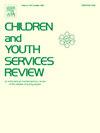The impact of the COVID-19 pandemic on children and adolescents eating disorders: A systematic review
IF 2.4
2区 社会学
Q1 FAMILY STUDIES
引用次数: 0
Abstract
Background
During the COVID-19 pandemic an increased prevalence of eating disorders was seen globally. For vulnerable groups, in particular children and adolescents, public health measures including lockdowns, limited in-person healthcare access, increased focus on handwashing and sanitization, and the increased fear related to the COVID-19 pandemic had a profound negative impact on this population. Despite the increased vulnerability of these children and adolescents to eating disorders during the pandemic and the trend observed, there has been limited research in this area. Hence, this systematic review aims to identify the impact of COVID-19 on eating disorders among children and adolescents globally.
Methods
Using PRISMA guidelines, a systematic search of 8 databases was conducted. We identified 4428 results, of which 250 studies were selected for full-text review. Of these, 42 studies were synthesized for our final analysis.
Results
We found that the majority of studies (83%) reported that the COVID-19 pandemic and related public health measures had a negative impact on eating disorders among youth and adolescents. We also found several individual, household and socio-structural factors associated with the worsening of eating disorders. Specifically, 17% of studies found that pandemic-origin fears and stress increased eating disorder-related outcomes. Twelve percent of studies reported parental influence to be associated with eating disorders during the COVID-19 pandemic and 14% of studies linked the loss of health services to an increase in eating disorders. In addition, age, gender, social support, co-morbidities or pre-existing symptoms and media were significantly associated with children and adolescent’s eating disorders.
Conclusions
Various factors stemming from the COVID-19 pandemic were found to have increased the prevalence of eating disorders in children and adolescents. Based on these findings, we suggest several policy implications and future areas of research.
背景在 COVID-19 大流行期间,全球范围内饮食失调症的发病率有所上升。对于弱势群体(尤其是儿童和青少年)而言,包括封锁、限制亲临现场就医、更加注重洗手和消毒在内的公共卫生措施,以及与 COVID-19 大流行相关的恐惧加剧,都对这一人群产生了深远的负面影响。尽管这些儿童和青少年在大流行期间更容易患上饮食失调症,而且观察到了这种趋势,但这方面的研究却很有限。因此,本系统性综述旨在确定 COVID-19 对全球儿童和青少年饮食失调的影响。我们确定了 4428 项结果,其中 250 项研究被选作全文综述。结果我们发现,大多数研究(83%)称 COVID-19 大流行及相关公共卫生措施对青少年饮食失调产生了负面影响。我们还发现了一些与饮食失调恶化相关的个人、家庭和社会结构因素。具体来说,17% 的研究发现,大流行引发的恐惧和压力会增加与饮食失调有关的结果。12%的研究报告称,在COVID-19大流行期间,父母的影响与饮食失调有关,14%的研究将医疗服务的缺失与饮食失调的增加联系在一起。此外,年龄、性别、社会支持、并发症或原有症状以及媒体也与儿童和青少年的饮食失调有显著关联。结论研究发现,COVID-19 大流行导致的各种因素增加了儿童和青少年饮食失调的患病率。基于这些发现,我们提出了一些政策影响和未来的研究领域。
本文章由计算机程序翻译,如有差异,请以英文原文为准。
求助全文
约1分钟内获得全文
求助全文
来源期刊

Children and Youth Services Review
Multiple-
CiteScore
6.30
自引率
6.10%
发文量
303
期刊介绍:
Children and Youth Services Review is an interdisciplinary forum for critical scholarship regarding service programs for children and youth. The journal will publish full-length articles, current research and policy notes, and book reviews.
 求助内容:
求助内容: 应助结果提醒方式:
应助结果提醒方式:


